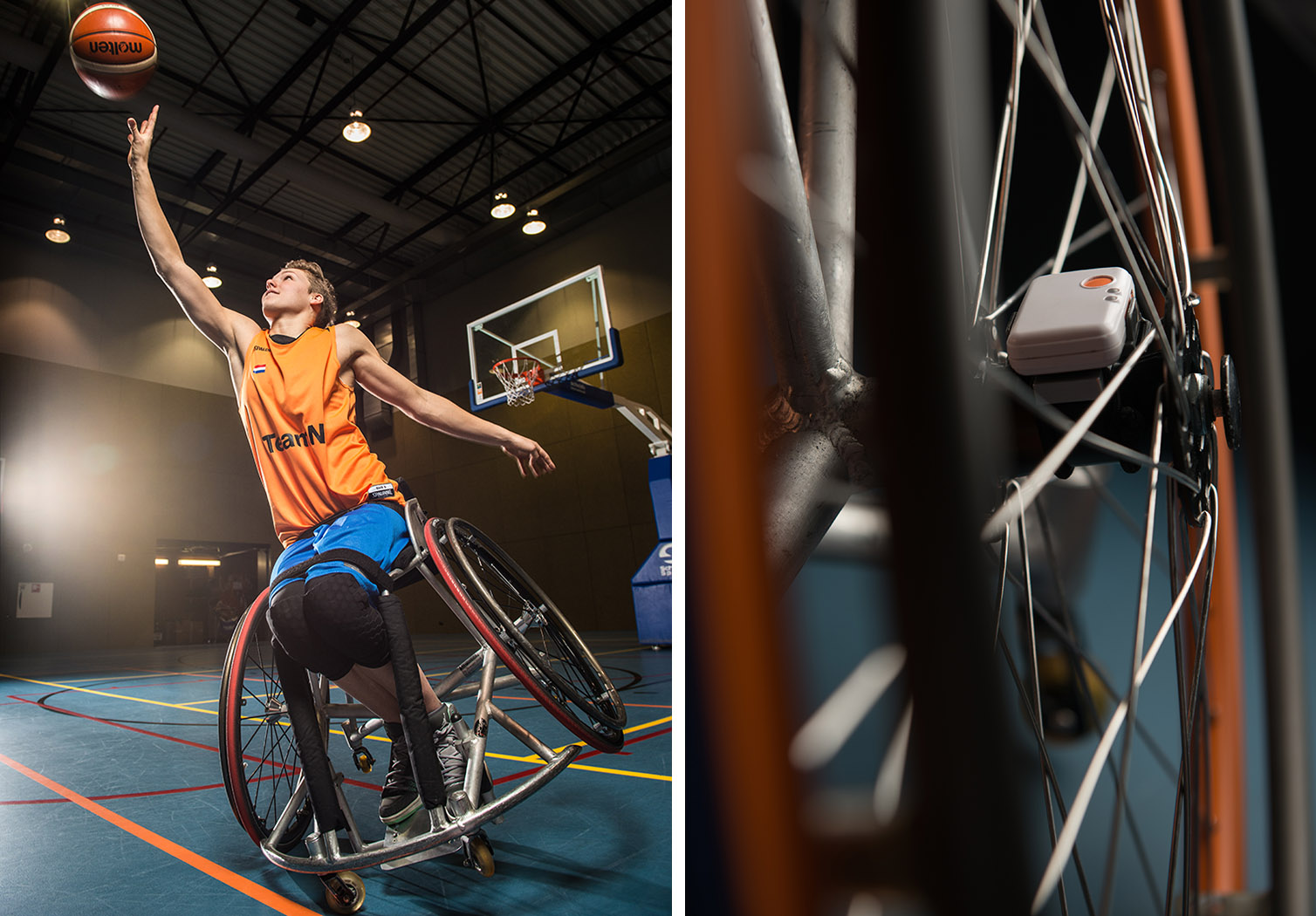Rienk van der Slikke has developed a technique to monitor individual wheelchair mobility performance using small sensors. On Friday 25 May, he will be awarded his PhD at TU Delft for his work on the subject.

Extension of the body
According to researcher Rienk van der Slikke, customisation is even more important in wheelchair sports than it is in regular sports. "In wheelchair sports, the performance is determined by the interaction between the athlete, the wheelchair and the sport. The wheelchair is like an extension of the athlete’s body and needs to be taken into account when monitoring performance, but its characteristics also affect that performance. Unravelling the interaction between the wheelchair, the athlete and sport is valuable for wheelchair sports in general, but also assists individual athletes in their efforts to improve performance and prevent injury through overexertion", explains Van der Slikke.
Sensors
This is why Van der Slikke has developed a technique to monitor individual wheelchair mobility performance using small sensors. The Wheelchair Mobility Performance Monitor (WMPM) was designed to measure mobility performance as simply and objectively as possible. The method has been used on various wheelchair athletes, at different levels, under different conditions and in three different wheelchair sports (tennis, rugby and basketball). Van der Slikke has already measured the best teams in wheelchair basketball and monitored performances of top international athletes at the ABNAMRO 2017 tennis tournament.
Insight
"The monitoring provides an insight into the relationship between the athlete’s physical disability and performance, the relationship between training and competitions, the relationship between wheelchair configuration and performance and the differences in performance between wheelchair sports", continues Van der Slikke. "The information helps professionalise wheelchair sports because it provides a basis for tightening up the rules, ensuring that the sports are as fair as possible. In addition, the results can be applied by coaches and individual athletes in order to better assess and optimise individual performance by introducing new types of training or better wheelchair configuration. In my view, it is only a matter of time before the use of WMPM becomes standard practice in wheelchair sport and related research."
At the 2020 Tokyo Paralympics, Van der Slikke hopes to be able to provide support for wheelchair tennis and basketball.
Everyday use
The knowledge acquired can also prove useful for wheelchair users in their everyday life. Information about physical exertion and stamina while using a wheelchair can help in the process of rehabilitation. Ultimately, it should be possible for every wheelchair user to be easily able to monitor his or her own performance.
Another aim is to provide feedback to the public on everything that the wheelchair athlete does during a competition – in other words demonstrating what a top performance in wheelchair sport actually entails.
The doctoral research of van der Slikke (researcher and lecturer in the Movement Technology course at The Hague University of Applied Sciences) is part of the project 'the perfect sports wheelchair' in which TU Delft, de Haagse Hogeschool and the Vrije Universiteit Amsterdam collaborated. On Wednesday 23 May, a symposium will take place at the Vrije Universiteit in Amsterdam to conclude the project. Van der Slikke will also present his research and ideas for the future of the sports wheelchair.
Contact
Rienk van der Slikke, R.M.A.vanderSlikke@hhs.nl , +31 6 28799311
Claire Hallewas (media relations officer TU Delft), C.R.Hallewas@tudelft.nl , +31 6 40953085
